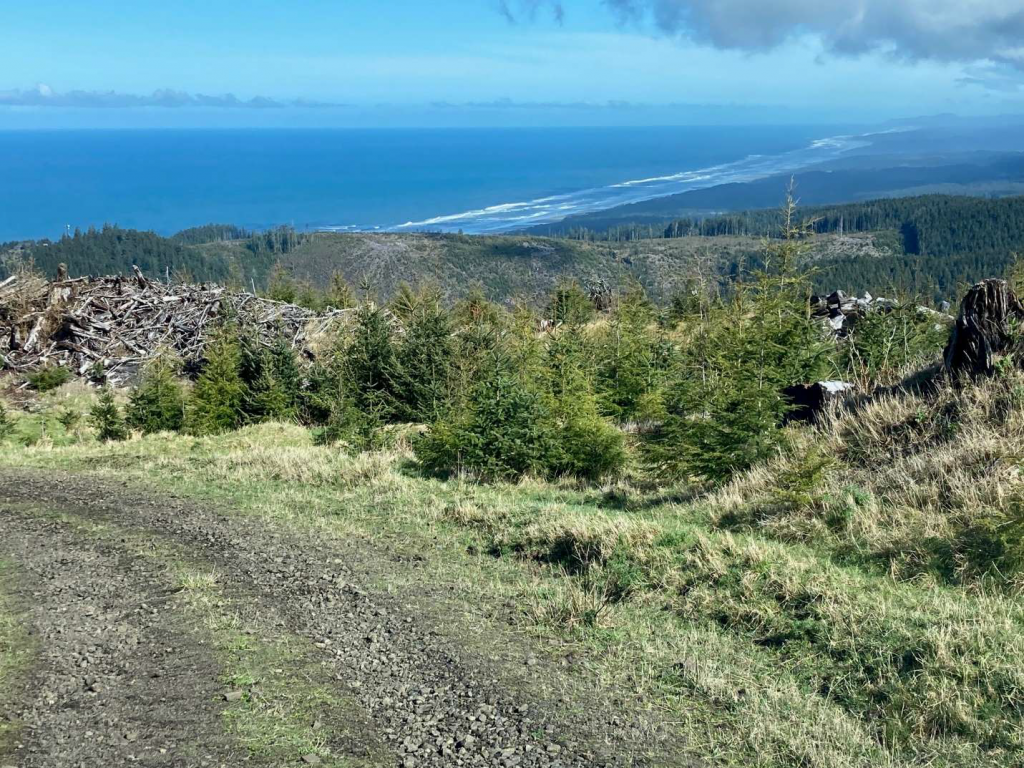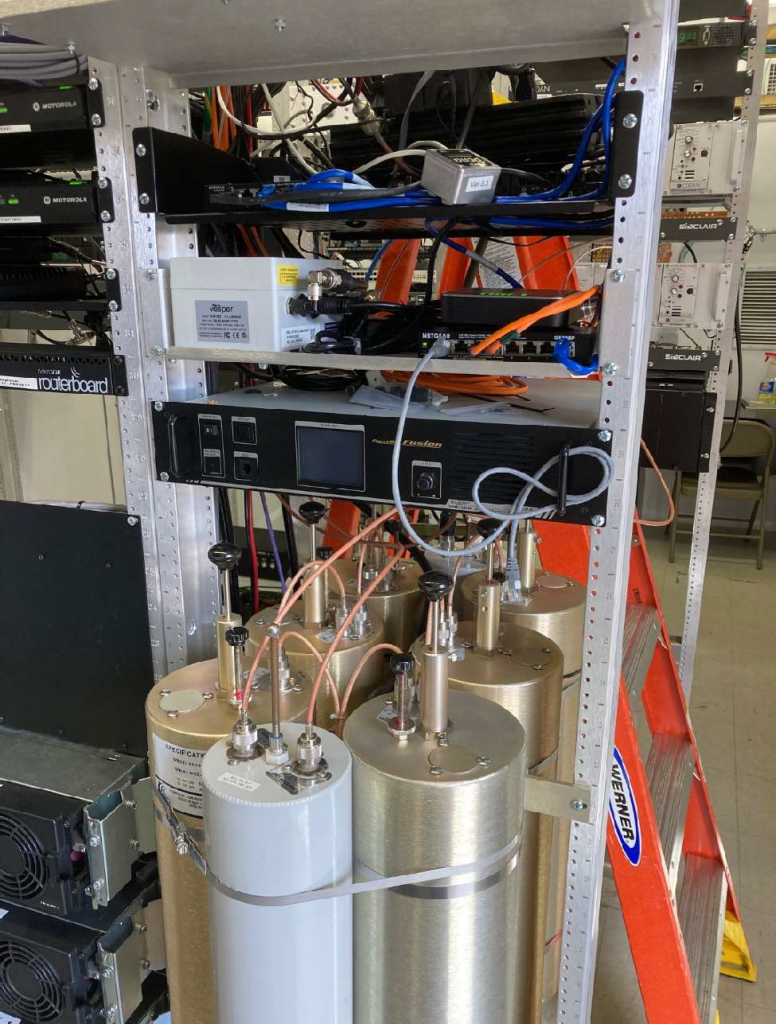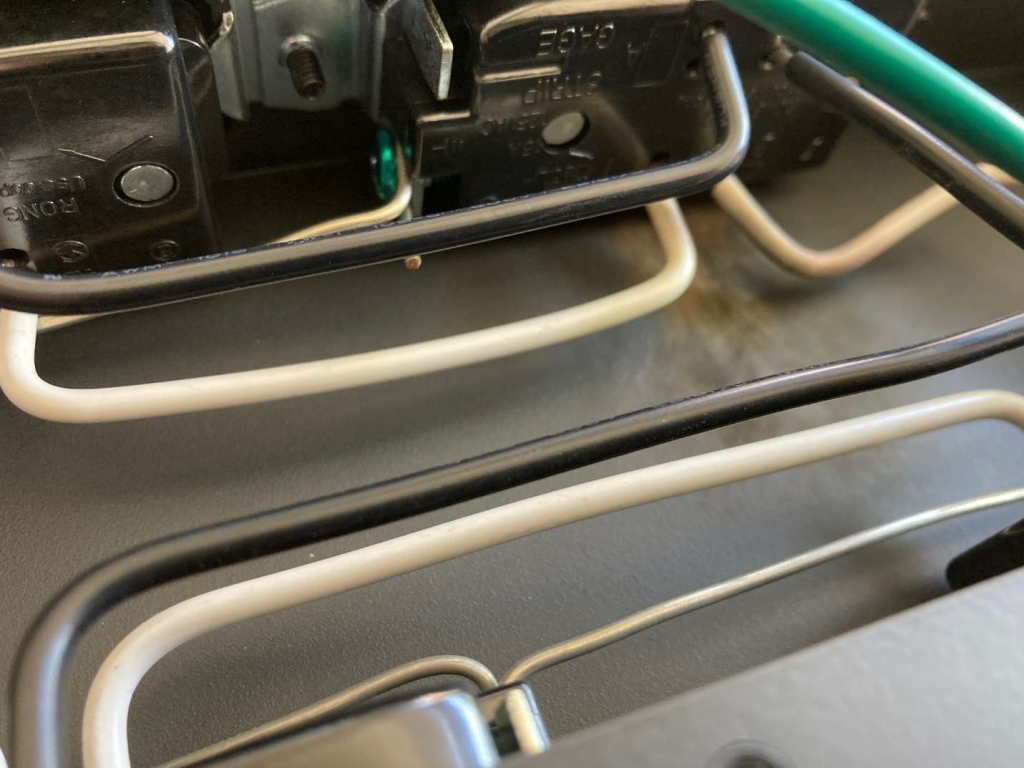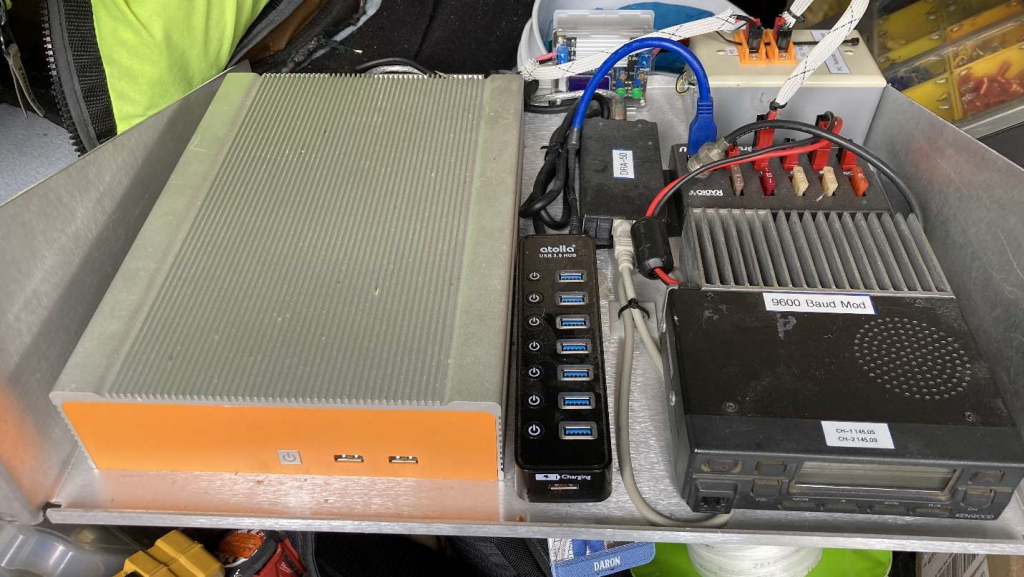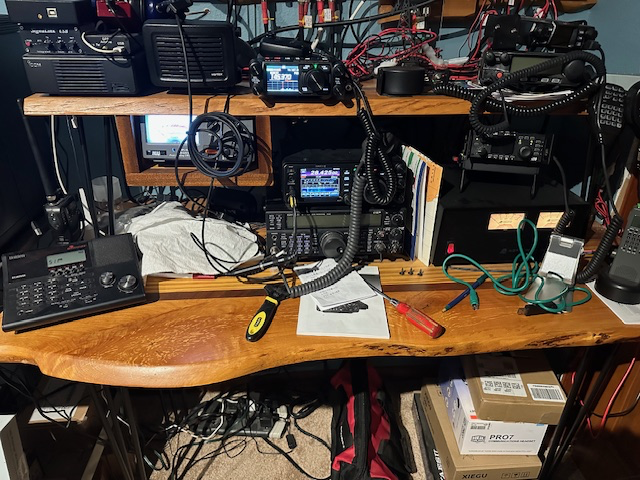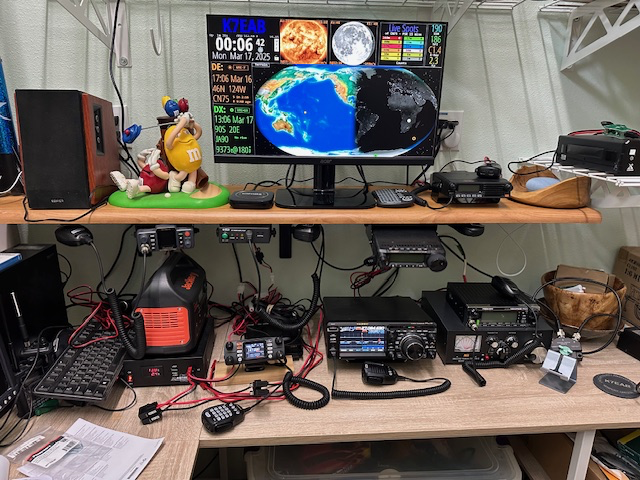By W7CRG
Preface: This started as a blog for the amateur radio group but a large part of it has turned into a bit of a historical blog. It still has material worthy of thought for hams as we speak on the airwaves; but, if the historical part bothers you … you have my apologies. Chuck
When we speak we don’t always realize who might be hearing us. This is a concern in life and especially when we are broadcasting over the radio. I know that some people don’t care who hears them and there are those who perform in this way to purposely anger, insult or abuse others. But I’m speaking to the civil members of our population.
My father didn’t always say a lot but when he did it was because he thought it important or he sincerely believed what he said. There were some times when he used some pretty salty language. I remember once when we were at the Siletz Boat Works, two miles east of Kernville. Dad had a large wooden barge that was tied up on the south side of the river. It being Oregon, there was rain. Lots of rain and the barge had a number of large openings in its deck which meant someone needed to pump it out periodically.
Dad had a fire pump which was surplus from WWII. In the 1950’s there was a lot of WWII surplus in civilian use. This pump was basically a ten horsepower Johnson outboard engine hooked to a very good pump. It was started by wrapping a line around a pulley on the flywheel and pulling to spin the flywheel and start the gas engine. It could be cantankerous at times and cantankerous breeds frustration and frustration often breeds swearing. At least with my Dad it did.
I was about twelve and my given chore was to stand there holding the output hose to ensure the water went overboard and not back into the barge. After ten or so strenuous pulls and no starting roar Dad fiddled with the primer, the choke and the throttle. As he did I said, “Why don’t you do what you always do, Dad?”
“And what would that be son?”
“Call it a Son Of A B—-”
It was completely out of character for me to actually use those words at that time in my life. Even more out of character when speaking to my Dad who informed me of my inappropriate speech. Two more hefty pulls with no resulting roaring sound. “You Dirty Rotten SON OF A B—–!!!” Followed by a roaring engine and a stream of bilge water that almost knocked an unprepared twelve year old into the Siletz river when the hose I was holding suddenly became a solid stream of water.
I so wanted to say, “See, I told you so.” But I figured I had ventured too close to being a smart aleck already and didn’t press my luck. Dad didn’t say anything but he looked slightly guilty as he came over and took the hose and secured it with a rope to a deck cleat.
I learned when certain language and certain actions were appropriate and when they were not appropriate. I guess I should use the phrase “get away with it” in stead of appropriate. At NO time was it appropriate if my little German Grandmother was within ear shot.
When and where I grew up, working men in working situations used swearing as part of their speech pattern. Some were worse than others. Society seemed to overlook and forgive those swearwords if they were on the logging site, the deck of a boat or some other work area.
Going back to my Dad. As a young man he was the Captain of an eighty foot tug, the “Chahunta” towing log rafts from the booming grounds above Kernville down to Siletz bay and out to the ocean delivering the logs to mills from Coos Bay to Puget Sound. This was in the mid 1930’s and Dad was in his early twenties.
At that time there wasn’t a lot of entertainment in places like Taft, Oregon. Word spread quickly that the “Chahunta” was coming down with a log raft and would be crossing the bar. Taft dock would fill with observers as this was an event worthy of catching!
The woman who would be my Mom was one of them. (I don’t even know if she and Dad were married back then.) As she stood on the dock the newly arrived Priest of the local Catholic church came and stood beside her to watch the event. “I’ve been told this is an interesting event worth watching,” he shared with her. She smiled and nodded in agreement.
Before this tale goes further I must explain to those unfamiliar with the
Siletz waterway that it was different then than it is now. The river was deeper because of the Spring freshets which occurred due to heavy rains. Like a flash flood, the freshet would sluice out the river bed. Another factor was that there were not yet numerous towns and cities drawing water out of the river. Lastly large boat traffic tends to widen and deepen waterways with the effects of wake and prop wash on the banks and river bottom.
The tug and raft would pass through the Kernville bridge which was a draw bridge. It would be opened by a number of men walking in a circle pushing strong poles in a windless. The windless was on the deck of the bridge and caused the roadway to swing open to a position up and down the river as opposed to across the river. It was a slow, tedious and back breaking task. A car coming upon an open draw bridge either had a long wait or left to do something else. Life progressed at a different pace in those days.
It would take the tug and log raft an hour or more to transit from the booming grounds at Kernville to the bar at Siletz Bay. Timing was critical as the tug would need a strong incoming tide to accomplish the necessary maneuvers. There was a dance between the tug, the raft and the current. The tug’s crew needed to respond quickly to position the tug while at the same time lengthening or shortening the hawser (towline). All of this was to cause the raft to swing, by the force of the incoming tide, from basically a north-south position alongside the sand spit to an east-west positioning toward the Taft dock and the bar. The tug and tow could then move out to sea and from thereon to the various sawmills.
If the raft hung up on a sandbar or the operation took too long and the tide became slack, or worse ebbed, the situation could become a real mess. To facilitate all this movement, the tug’s Captain stood at the highest viewpoint on top of the wheelhouse. Using the controls located there to steer and control the boat. From that position, with the tug facing seaward into the incoming tide, he could see the bar, the raft and the crew on the aft deck.
In those days steering was accomplished with a series of ropes and or chains traveling through pulleys to turn the rudder(s). Therefore the steering wheels were four to five feet in diameter to provide enough leverage to move those ropes and chains as well as position and move the rudder in the stream of the propeller(s).
On some tugs the throttle might be connected up there on top of the wheelhouse. Less modern tugs had the throttle and shifting from forward to reverse had to be done in the engine room by the engineer. A lever would move an indicator in the engine room indicating “ahead half” and so forth. Depending on the type of engine, in order to reverse it the engine had to be stopped, the cam shifted, then the engine restarted running in reverse. There was no gear box to change from forward to reverse. The engine was directly connected to the prop.
It is hard for those of us who have more modern mechanisms to move from forward to reverse to realize the forethought, coordination and timing it took to accomplish these tasks. When things went as planned it was a real slick show for the people watching from the Taft dock. When things went awry the people on the dock could be “treated” to roaring diesel engines, clanking chains and winches as well as a flood of salty language as commands and directives were shouted back and forth. Handi-talkies would have really made things easier but they didn’t come into existence for decades.
So now we get back to Mom standing on the dock next to the priest on a crystal clear fall morning. Dad’s voice rang out over the quiet waters of the bay as the tug swung into the channel with its bow seaward holding its position in the jaws against the in-rushing tide. The incoming tide began to swing the raft to the north and east but halfway to being in the position to head out to sea …. it hung up on a sandbar!
The tug had to back down out of the jaws or channel and re-position itself to pull the wayward raft more to the north and hopefully off the sandbar. As the tug was maneuvering the towline needed to be winched in to accommodate the tight space and keep it out of the propellers.
As one might guess, all did not go as it should. Was it because reactions were too slow or the current too strong moving the tug or raft or whatever? It doesn’t matter. The tug’s diesels roared and then quieted then roared again. Foam frothed from the stern of the tug as the props churned the bay’s water in varying directions. The crew tried mightily to accomplish their Captain’s salty commands which carried over the bay’s waters, easily heard over the roar of the tug’s engines and machinery.
“The Captain has quite a command of his boat … as well as quite a command of swearwords,” mentioned the priest to Mom. Do you know who he is?” he asked.
“It’s a small town and most everybody knows most everybody,” Mom replied trying not to let on she had shared numerous cups of coffee and one or two dances with the salty languaged tugboat skipper.
Then as she tried to inch away from the priest, one of her friends called out to her, “Ben’s swearing gets better every time they hang up! He reached a new art form today don’t you think, Almona?”
The priest grinned at her and said, “Sometimes the message needs strong words to accomplish the task.”
That was never Dad’s main vocabulary but in times of stress and immediacy we often become less than our best in communicating. That salty language did not carry over to his normal speech and was never heard over the radio.
The tugs Lincoln County Logging Company owned were among the first to have radios installed. My Grandfather, Almon A. Kerry was the superintendent of L.C.L.C. and a very progressive man. He was also someone who wanted answers or actions when he wanted them. I think the idea of being able to communicate with the tugboats answered that need. Those radios were AM and in the “marine band” located near the current 40 meter band. If you see pictures of the tugs they are sporting “clothesline antennas” which was four 16 – 18 foot lengths of wire strung back and forth between two spreader bars, one on the forward mast and one on the aft mast. Early hams would use similar configurations for mobile antennas. I have a t-shirt with a Model T sporting such an antenna.
We all need to strive to improve our communication skills. How effective can we be to convey the information necessary? Do we say what we want to? Does the situation cause us to make mistakes? Are we the most effective communicator we can be? Practice makes perfect.
I, once again apologize for shifting off topic to historical and biographical material. There are some radio references. On the other hand, you have learned a little about the history of the area in which we reside. Questions, comments and concerns can be directed to me via email.
Chuck W7CRG

